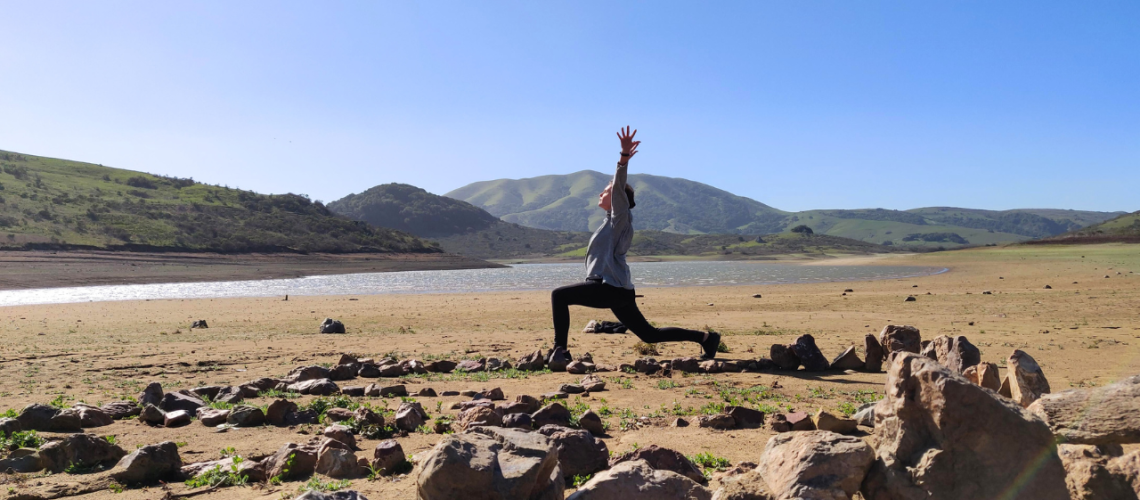Our bodies know how to heal
Our body is constantly regenerating itself.
- 330 billion cells are replaced every day – about 1% of your entire body. (1)
- 2 million new blood cells are made every second. (2)
- Skin cells rejuvenate every two to three weeks. (3)
- Muscle and fat cells are constantly being broken down and built up.
Bone Health and Osteoporosis
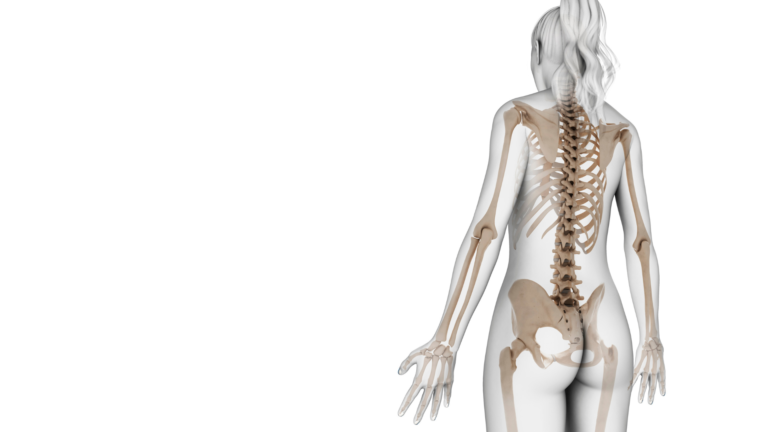
You might think of your bones as being hard and unchangeable, but they are living, growing tissues, made up of hard minerals, held together in a flexible collagen matrix, and water. This combination of materials makes them both strong and resilient.
Just like all the other parts of your body, your bones are constantly being broken down and remodelled.
Special cells called osteoclasts break down bone – this is called bone resorption.
Other cells called osteoblasts build up new bone – this is called bone deposition.
As people age and sex hormones decrease, the rate of bone resorption – breaking down bone, outpaces the rate of bone deposition – creating new bone.
The net result is bones which have a less dense structure, making them lighter and more fragile. This means that you may be more likely to break a bone if you fall.
Western medicine calls this decrease in bone density osteopenia in the early stages and osteoporosis in the later stages. Osteo means bones and porosis means porous.
While this is a normal result of ageing, it is still a serious health issue, putting many older people at risk of fracture and the resulting deterioration of quality of life. The Bone Health and Osteoporosis Foundation states that:
Approximately 10 million Americans have osteoporosis and another 44 million have low bone density. This means that half of all adults aged 50 and older are at risk of breaking a bone and should be concerned about bone health. (4)
How Can We Improve
Bone Health Naturally?
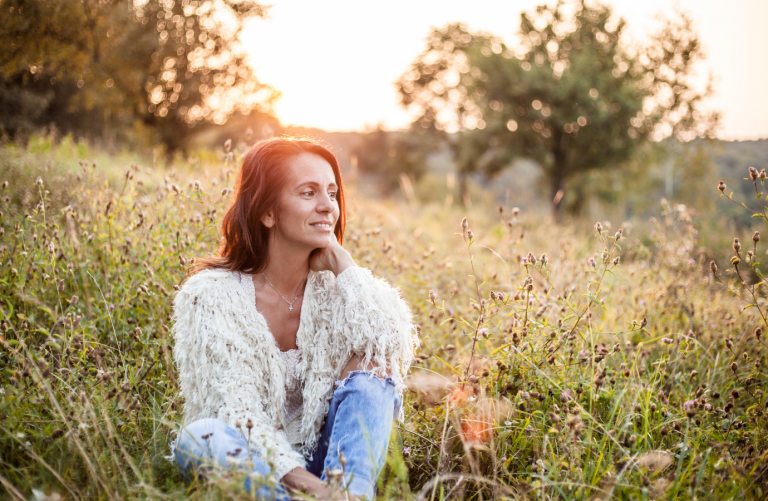
There are a few things that we know help:
- Good nutrition – eat a healthy diet, including all the nutrients you need for healthy bones. Ideally your diet would focus on fresh, seasonal wholefoods, with a good balance of alkaline to acid foods.
- Supplements such as Calcium, Magnesium, Vitamin D and Vitamin K2 are a good idea if you are of menopausal age or have been diagnosed with osteopenia or osteoporosis.
- Exercise consistently, including a mixture of weight-bearing, balance and resistance training.
How Can Yoga Help Build
Healthier Bones?
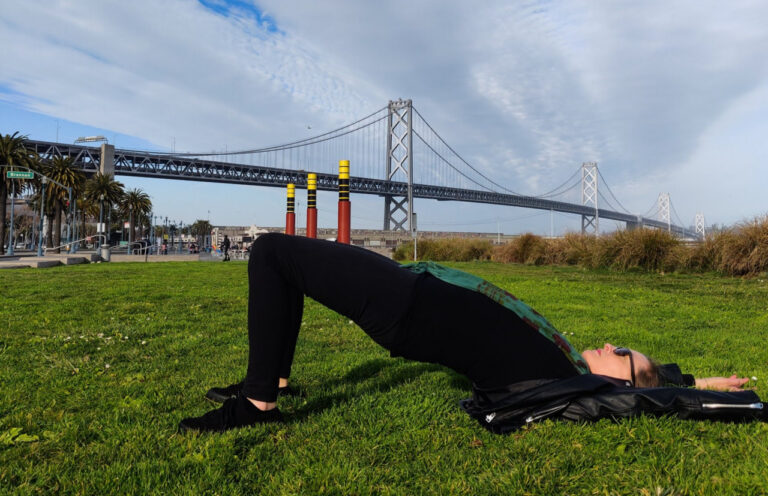
Yoga is an ideal exercise to help you maintain your healthy bones. Yoga includes weight-bearing, balance, resistance training, plus much more.
Yoga can help you have healthier bones because:
- Yoga can improve bone density.
- Yoga can improve bone quality.
- Yoga can increase joint mobility and comfort.
- Yoga can reduce stress.
- Yoga can reduce your risk of falling.
Let’s dive a little deeper into each of these areas.
Yoga Can Improve Bone Density

Bone regeneration is stimulated when the bones are put under stress by impact, compression or resistance. This biological process, known as hormesis, is where a small amount of something potentially harmful can have stimulating and beneficial effects.
Yoga applies stress to bones in several ways.
1. Although it seems like a relatively gentle practice, Yoga is weight-bearing – the legs support the weight of the body, and the load is increased in some of the stronger stances such as Virabhadrasana (Warrior Pose) and Malasana (Squat).
2. Yoga includes many isometric contractions – muscle contraction without changing length – this stimulates bone growth as the muscles tighten and compress around the bone.
3. Yoga also includes direct compression of bone, for example when we press our hands together in Anjali Mudra (Prayer Pose) or use a strap to pull on our heel in Supta Padangusthasana (Reclining Hand to Big Toe Pose). This kind of pressure stresses the bone and encourages the creating of new bone cells.
Yoga Can Improve Bone Quality

Bone density measures the relative mass to volume of bone. It is assumed that a lighter, less dense bone is weaker and more fragile. However, research into bone health shows that bone quality as important as bone density. Trabecular strength – the structure and organisation of the inner fibres of the bone – contributes to 30-70% bone strength and resistance to fracture. (5)
Bone is made up of a hard mineral (hydroxyapatite, a mixture of calcium and phosphorus) held in a web of connective tissue (made of collagen and other proteins).
Connective tissue, or fascia, is directly affected by the practice of Yoga. The movements in Yoga mobilise and hydrate the fascia, making it stronger and more resilient. Bone might be thinner and more porous, but if it is laid down on a matrix of healthy and resilient connective tissue, the bone may be of higher quality than someone with denser bones.
Yoga Can Increase Joint Mobility And Comfort
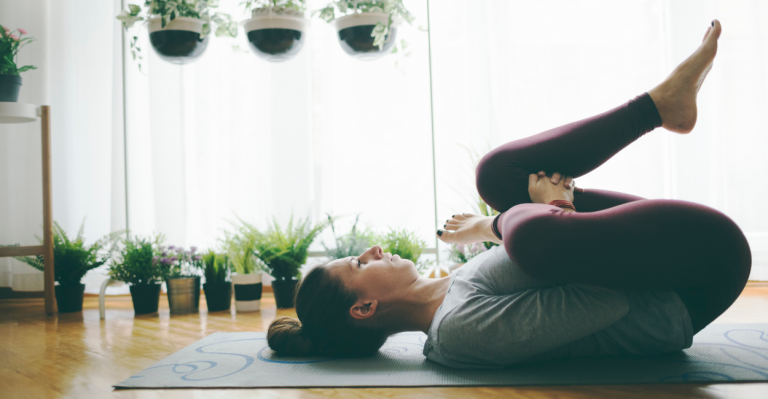
The basic Yoga stance, Tadasana (Mountain Pose), focuses on lightness and space in the body. A common teaching instruction is to lengthen the spine by drawing down on the tailbone and up at the crown of the head. This helps to increases space between the vertebrae, which reduces abrasion and the rounding of the spine often associated with osteoporosis.
In my classes, to warm up, we usually practise some kind of unstructured movement where we shake, jiggle, glide and slide every joint in the body. This helps to improve the quality and quantity of synovial fluid – the fluid in between each joint.
Yoga, unlike most other forms of exercise, moves the spine and joints throughout their range of motion. This improves the mobility of the whole joint, rather than just repeating a movement in one direction, which can lead to uneven wear and tear.
Another benefit of moving the joints in all planes and all directions is a sanding effect across the entire joint surface. This gentle abrasion stimulates new cartilage production, creating a more effective joint cushion and increasing comfort in movement.
Yoga Can Reduce Stress
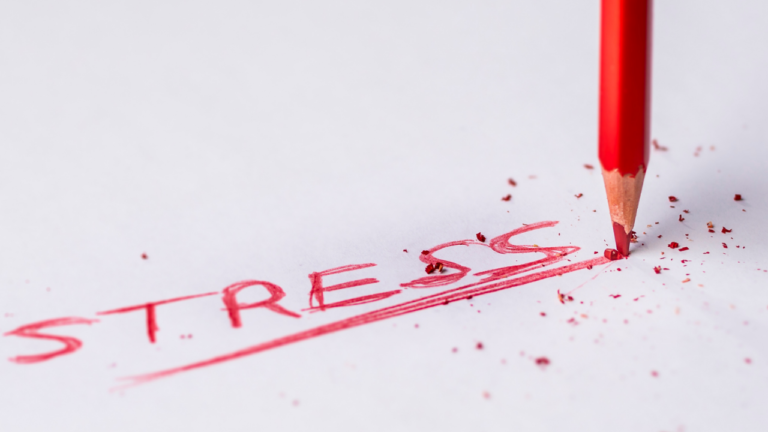
Stress is one of the major risk factors for osteoporosis.
The significant biochemical and physiological effects of psychological stress are beginning to be recognized as exacerbating common diseases, including osteoporosis. (6)
Some stress is a normal part of life and is a necessary motivator to get things done. However, many people in the world today live under conditions of chronic stress – stress that persists day after day without sufficient time to recover.
High levels of cortisol produced under stress leaches calcium from bones and, if this persists over time, bone density can be severely depleted.
Yoga is a perfect antidote for our stressful world. Yoga practice helps us to bring together the body, breath and mindful intention, which:
- calms and focuses the mind
- reduces the production of the stress hormones adrenalin and cortisol
- moves us from the sympathetic nervous system (the fight/flight response) into our parasympathetic nervous system (the rest/digest response)
- helps us to be more embodied so that we learn to notice when stress is accumulating in the body
- teaches methods of stress reduction that we can bring into our everyday lives.
Yoga Can Reduce Your
Risk of Falling
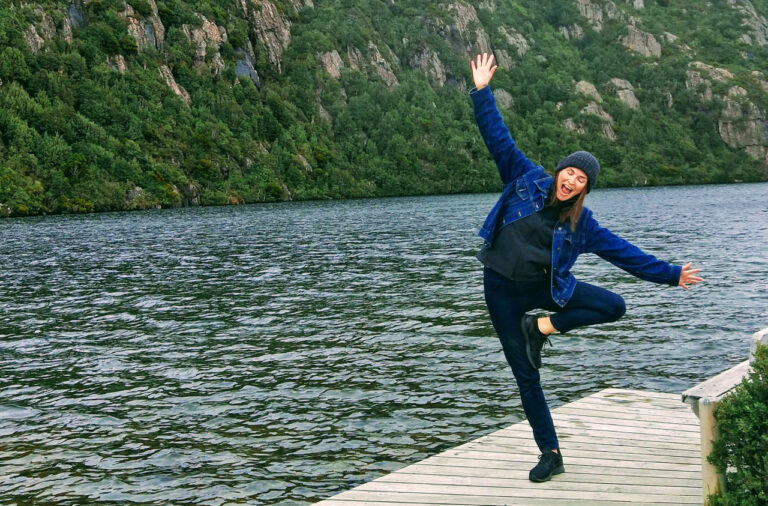
Osteoporosis is symptom free. We don’t have pain or other indicators to let us know that our bones are becoming increasingly fragile. In fact, many people do not even know that they have osteoporosis, because they have never had a bone mineral density scan.
Ultimately, the only reason it matters if you have osteoporosis is if you fall – and then your risk of breaking a bone is much higher than that of someone with normal bone density.
Why do we fall? There are many reasons, here are some:
- not being mindful, thinking too much, rushing too much, in our heads rather than in our bodies
- lack of exercise and a lot of time sitting = poor posture, responsible for many falls
- poor balance – a slight trip could end up in a fall
- poor sleep – many falls happen during the night
- impaired sight and hearing leads to trips, bumps and falls
- lack of confidence and co-ordination
- paradoxically, the fear of falling often causes hesitancy which leads to a fall.
Practising Yoga changes all these things. Regular Yoga practice:
- increases mindfulness, balance and co-ordination
- improves sleep (falls often happen when getting up in the middle of the night)
- increases core strength, allowing you to move around more easily and flexibly
- increases proprioception (our sense of where you are in space) thus reducing bumps and falls
- helps you to be more in your body than in your head.
What Kind of Yoga Helps Build Healthier Bones?
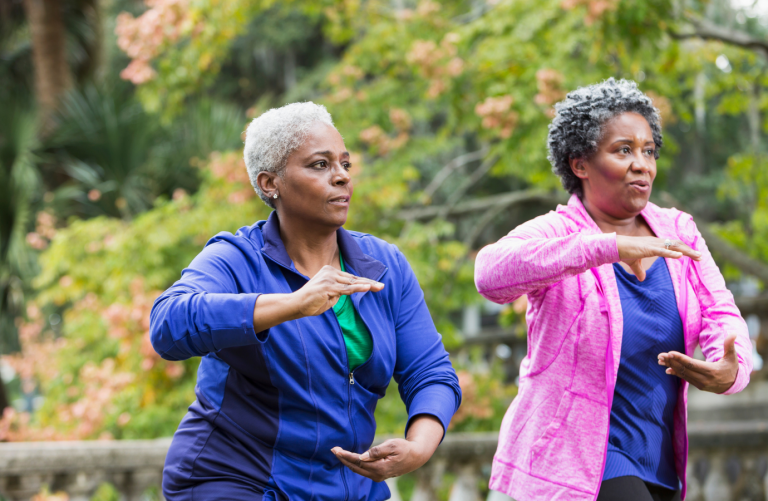
There are many different types of Yoga and many of them will be beneficial to your bone health. You will need to find the style and practice that works for you at your current level of fitness and health.
If you have a diagnosis of osteoporosis, be sure to check with your health practitioner before embarking on a new physical practice. Working 1-1 with a Yoga Teacher or Yoga Therapist who is experienced with osteoporosis, is a good idea, so that your practice can be tailored for you.
What Benefits Can You Expect from Yoga?
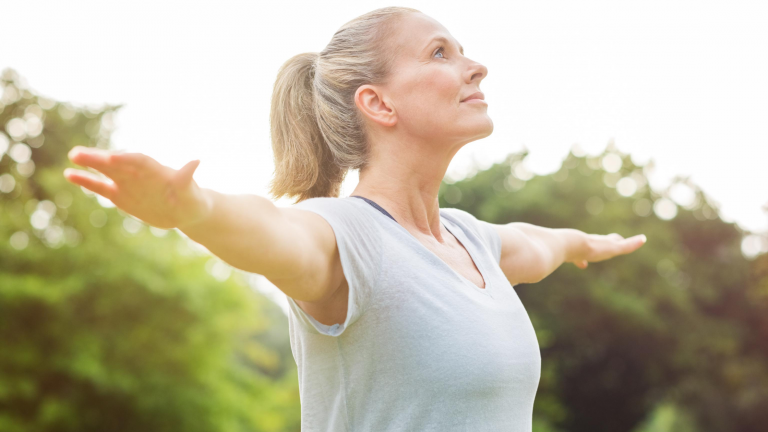
Research shows that mindful movement practices such as Yoga and Yoga can be instrumental in slowing or halting the progress of osteopenia or osteoporosis, especially if it is done regularly. This means practising some Yoga on most days, rather than a long class once a week.
Your Yoga practice will also bring many other benefits for your metabolic and cardiovascular health, immune function, mood and nervous system.
Key Takeaways
- Yoga has multiple benefits for your bone health.
- An experienced teacher can help design a safe and effective practice.
- Practice every day if possible.
- Complement your practice with a healthy lifestyle.
Concerned about your bone health?
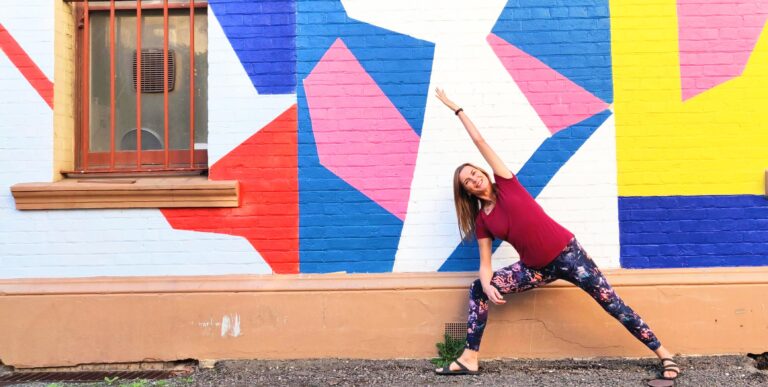
Maybe you’ve received a diagnosis of osteopenia or osteoporosis and you are in shock: afraid about what this means and confused about what to do to support your body? Do you want to maintain a strong, healthy body and carry on with all the activities you love, the natural way?
Check out my course Yoga for Healthy Bones. This 6-module self-paced course includes Yoga, Qigong, Breathwork, Meditation, Nutrition and Mindset to maximise bone strength, improve mobility and balance, and feel better about your body.
Click the button below to find out more.
NOTES
- (Does Your Body Really Replace Itself Every Seven Years?, 2014)
- (How Your Body Replaces Blood, n.d.)
- (Does Your Body Really Replace Itself Every Seven Years?, 2014)
- (Bone Health & Osteoporosis
- (Fishman, Loren & Saltonstall, Ellen, n.d.)
- (Wippert et al., 2017)
BIBLIOGRAPHY
Bone Health & Osteoporosis Foundation. (n.d.). Bone Health & Osteoporosis Foundation. Retrieved March 16, 2023, from https://www.bonehealthandosteoporosis.org/
Burgonio, E. (2022, December 13). Yoga to Strengthen the Bones. White Tiger Yoga. https://whitetigerYoga.com/Yoga-to-strengthen-the-bones/
Does Your Body Really Replace Itself Every Seven Years? (2014, June 6). HowStuffWorks. https://science.howstuffworks.com/life/cellular-microscopic/does-body-really-replace-seven-years.htm
How Yoga Helps With Osteoporosis. (2019, March 24). Long White Cloud Yoga. https://www.longwhitecloudYoga.com/how-Yoga-helps-with-osteoporosis/
How your body replaces blood. (n.d.). NHS Blood Donation. Retrieved March 16, 2023, from https://www.blood.co.uk/the-donation-process/after-your-donation/how-your-body-replaces-blood/
Montgomery, G., Abt, G., Dobson, C., Smith, T., Evans, W., & Ditroilo, M. (2019). The mechanical loading and muscle activation of four common exercises used in osteoporosis prevention for early postmenopausal women. Journal of Electromyography and Kinesiology, 44, 124–131. https://doi.org/10.1016/j.jelekin.2018.12.004
Resource Library. (n.d.). Bone Health & Osteoporosis Foundation. Retrieved March 16, 2023, from https://www.bonehealthandosteoporosis.org/patients/bhof-resource-library/
Wippert, P.-M., Rector, M., Kuhn, G., & Wuertz-Kozak, K. (2017). Stress and Alterations in Bones: An Interdisciplinary Perspective. Frontiers in Endocrinology, 8. https://doi.org/10.3389/fendo.2017.00096

